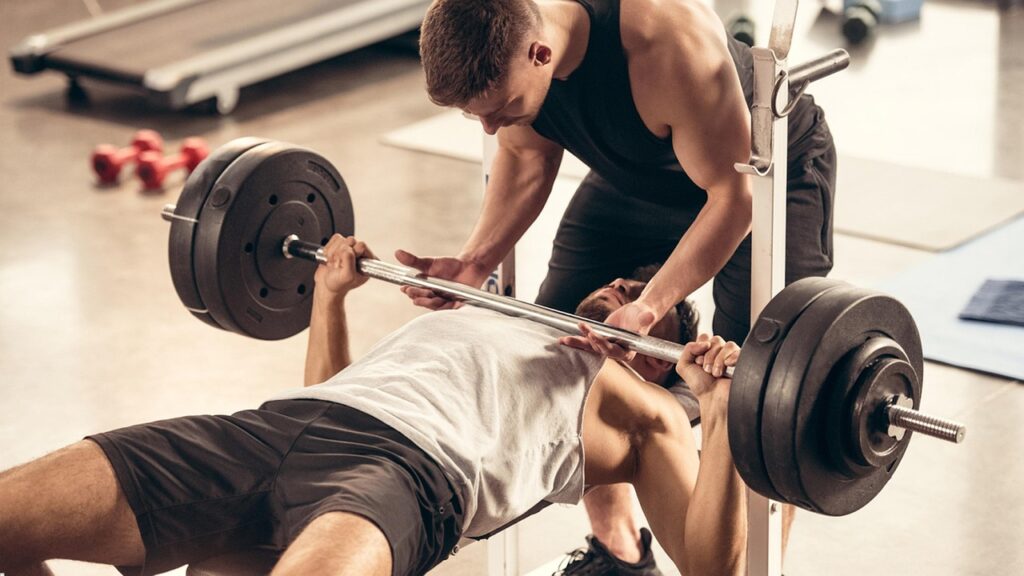
Men, as we cross the threshold into our 40s, a new chapter of life begins—one that brings wisdom, experience, and, yes, some undeniable physical changes. Your body isn’t the same finely-tuned machine it was in your twenties, and expecting it to respond to the same workout routines without complaint is not only unrealistic, it can be downright dangerous. This isn’t about slowing down or giving up on your fitness goals; it’s about getting smarter, training strategically, and prioritizing longevity over short-term gains.
Understanding these shifts is the first step towards an optimized fitness journey. After 40, men often experience a slower metabolism, decreased muscle mass, reduced hormone production, and an increased risk of joint issues. These physiological realities make it harder to recover from intense workouts and significantly raise the chance of injury if you continue to push through pain or stick to outdated routines. It’s time to adjust our exercises for better health as we age, ensuring our workouts are a source of vitality, not discomfort.
This guide isn’t here to tell you to stop working out; quite the opposite. We’re here to empower you with knowledge, showing you how to balance ambitious fitness goals with unwavering safety. By adapting your exercise habits, you can maintain strength, improve flexibility, and protect your joints, all while challenging your muscles effectively. We’ll delve into specific exercises that become riskier with age and, crucially, provide you with safer, more effective alternatives that align with your body’s evolving needs, helping you stay fit and strong for decades to come.
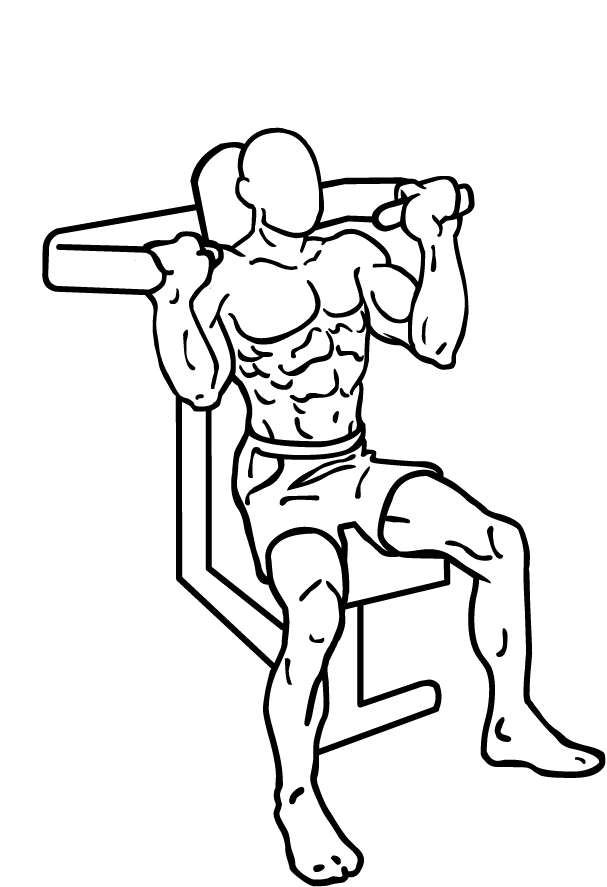
1. **Behind-the-Neck Shoulder Presses**The Behind-the-Neck Shoulder Press is an exercise often seen in gyms, but for men over 40, it poses significant risks. This movement places considerable stress on both the shoulders and the neck, making it a prime candidate for rotator cuff problems and various shoulder injuries. The mechanics of the exercise can force the shoulders into an externally rotated and abducted position that can be detrimental to joint integrity as flexibility and tissue tolerance decrease with age.
Even for individuals with excellent form and mobility, the behind-the-neck variant is simply not ideal for older bodies. It can exacerbate existing shoulder issues or lay the groundwork for new ones, leading to chronic pain or requiring lengthy recovery periods. The high-risk nature of this exercise means that the potential for injury often outweighs any perceived benefits, diverting your focus from sustainable strength to managing preventable pain.
For men in their 40s and beyond, the goal should be to build strength and maintain joint health without introducing unnecessary strain. Pushing through the pain or ignoring the discomfort associated with this exercise is a surefire way to compromise your long-term ability to lift, play, and live actively. It’s an inefficient use of your body’s precious resources, causing more wear and tear than it delivers in functional strength.
To effectively work your deltoids and maintain shoulder strength without the inherent risks, consider the Front Shoulder Press. This modification involves performing shoulder presses with the barbell or dumbbells in front of your body, rather than behind your neck. This simple change significantly eases the pressure on your rotator cuff and allows for a more natural, less impingement-prone range of motion, providing excellent strength-building benefits while prioritizing joint protection for long-term well-being.

2. **Upright Barbell Rows**The Upright Barbell Row is another exercise frequently highlighted as problematic, particularly for the shoulders of older men. This movement involves pulling a barbell vertically towards your chin, with elbows flaring out high. The inherent mechanics of the upright row can lead to shoulder impingement, a painful condition where tendons in the rotator cuff are pinched, causing pain, inflammation, and over time, significant damage.
For men over 40, whose joints may already have accumulated some wear and tear or whose flexibility might be somewhat reduced, the upright row becomes an even greater liability. The internal rotation and abduction involved in the movement can put undue stress on the rotator cuff tendons, increasing the likelihood of injury. Instead of strengthening the shoulders, this exercise can actively contribute to their degradation, making everyday movements and other exercises difficult.
Many individuals report pain or discomfort during or after performing upright rows, even when they believe their form is correct. This is a clear signal that the exercise may not be compatible with their anatomy or current joint health. Prioritizing exercises that are easier on the shoulders is a crucial step towards maintaining a consistent and injury-free workout regimen for long-term fitness success.
To strengthen your traps and lateral deltoids effectively without risking shoulder impingement, wide-grip dumbbell upright rows are an excellent and much safer substitute. Using dumbbells and a wider grip reduces the degree of internal rotation and excessive upward rotation of the scapula that causes impingement. This minimizes pressure on rotator cuff tendons, targeting the same muscles effectively while drastically reducing discomfort or injury risk, building powerful, stable shoulders for overall upper body strength.
Read more about: Mastering Midlife Fitness: The Essential Exercises Men Over 50 Need to Stay Strong, Mobile, and Injury-Free

3. **Forward Lunges**While lunges are generally excellent for developing lower body strength, the forward lunge variation can be particularly demanding on the knees, especially for men over 40. As we age, the risk of joint issues increases, and the shear forces placed on the knee joint during a forward lunge can lead to strain and injury. The impact of stepping forward and pushing off can create a less stable environment for the knee, making it susceptible to discomfort or chronic problems.
For those with pre-existing knee concerns or reduced joint cartilage, the forward lunge can exacerbate these issues, causing pain and limiting mobility. The dynamic nature of the movement, combined with the deceleration and acceleration required, means that improper form or insufficient warm-up can quickly lead to problems. It’s an exercise that, while beneficial for some, often carries too high a risk for men seeking to maintain long-term knee health.
The objective for men over 40 should be to strengthen the legs and glutes without compromising the integrity of the knee joints. Choosing alternatives that reduce direct impact and shear stress is vital for injury prevention. Continuing with forward lunges despite knee discomfort is counterproductive to achieving sustainable fitness and can sideline you from your routine.
Instead of forward lunges, integrating reverse lunges or Bulgarian split squats into your routine offers equally effective lower-body development with significantly less stress on the knees. Reverse lunges involve stepping backward, allowing for a more controlled descent and ascent, reducing the impact and shear forces on the front knee. Bulgarian split squats, performed with one foot elevated, deeply challenge the quadriceps, hamstrings, and glutes, improving balance with less direct knee strain due to their vertical, controlled movement. Both options build strong, resilient legs safely.
Read more about: Mastering Midlife Fitness: The Essential Exercises Men Over 50 Need to Stay Strong, Mobile, and Injury-Free

4. **Dumbbell Flies**Dumbbell flies, a common chest exercise, can place excessive stress on the shoulders, making them a high-risk movement for men over 40. The nature of the exercise, which involves extending the arms widely with dumbbells, can lead to overextension of the shoulder and chest joints. This is particularly precarious for individuals who possess less flexibility in their shoulder girdle or those with a history of shoulder injuries, as the wide arc of motion can stretch tendons beyond a safe limit.
When the arms are extended too far or the weights are too heavy, the shoulder joint can be forced into compromised positions, increasing the vulnerability of the rotator cuff and other stabilizing ligaments. This puts you at a higher risk of strains, tears, or impingement. For someone already managing age-related reductions in tissue elasticity or previous injury, dumbbell flies can exacerbate these problems, transforming a strength-building exercise into a potential source of pain and setbacks.
The goal of chest training is to stimulate muscle growth and strength safely. If an exercise inherently demands a degree of flexibility or joint stability that is no longer consistently achievable, it becomes inefficient and counterproductive. Instead of contributing to robust upper body development, it risks undermining it, leading to painful interruptions in your fitness journey.
To effectively target the chest muscles while minimizing shoulder strain, consider incorporating cable flies or pec deck machine exercises into your routine. These alternatives provide a safer and more controlled environment for chest development. Cable flies maintain constant tension on the pectoral muscles throughout the entire range of motion, excellent for hypertrophy, without the peak stress points often associated with free weights at full extension. The cable machine allows for a customizable arc, keeping shoulders protected, while the pec deck machine offers a fixed, guided path, reducing rotator cuff strain. Both options allow consistent muscle engagement for growth without injury.

5. **Crunches**Crunches, a staple in many core routines, are actually at the top of the list of potentially harmful exercises, particularly for men over 40. The repetitive flexion of the spine that crunches demand can place significant strain on the spinal discs and ligaments. This constant bending motion can increase the risk of developing or exacerbating back problems, making them an inefficient and potentially dangerous way to build core strength as you age.
For older men, whose spinal integrity may already be compromised by years of wear and tear, or those with underlying disc issues, crunches can lead to persistent lower back pain or even more serious spinal injuries. The exercise focuses primarily on the rectus abdominis, neglecting the deeper core muscles responsible for spinal stability. This narrow focus, combined with the spinal strain, makes crunches a less effective and higher-risk choice for overall core development.
The aim of core training is to build a strong, functional midsection that supports your entire body, improves posture, and prevents injury. If an exercise primarily contributes to spinal strain rather than comprehensive core stability, it’s time to re-evaluate its place in your routine. Sustained spinal discomfort can severely impact your ability to perform other exercises and daily activities, hindering your quality of life.
For building robust core strength and promoting spinal health, planks are unequivocally a superior choice over crunches. Planks are an isometric exercise that requires you to maintain a rigid, straight line from your head to your heels, engaging the entire core musculature—including the rectus abdominis, obliques, and transverse abdominis—without any spinal movement. This stability focus is far more beneficial for spinal protection and functional strength, developing strength that translates directly to better posture and injury prevention.
Read more about: Beyond the Burn: 15 Trainer-Approved Exercises for a Stronger, More Functional Core Than Crunches

6. **Intense Cardio Sessions**While cardio is essential for heart health, pushing through intense, prolonged cardio sessions can actually be counterproductive for men over 40, potentially leading to increased cortisol production. Cortisol, known as the stress hormone, when chronically elevated, can have several negative effects, including promoting weight gain, particularly around the midsection. This makes these intense, exhaustive sessions less efficient for fat loss and overall well-being.
The body of a man over 40 already undergoes hormonal changes, including reduced hormone production, making it more sensitive to prolonged stress. Overdoing high-intensity, long-duration cardio can overwhelm the body’s recovery systems, leading to fatigue, hindered muscle recovery, and a plateau in fitness progress. It can also create an undue amount of systemic inflammation, which is detrimental to overall health.
The goal of cardiovascular training for men over 40 should be to improve heart health and burn fat effectively without overtaxing the system. If your cardio leaves you feeling perpetually drained, hinders your strength training recovery, or contributes to unwanted weight gain, it’s not serving your long-term health goals. The inefficiency lies in the metabolic and hormonal stress it can induce, rather than the movement itself.
Instead of grueling, intense cardio sessions, the context emphasizes sticking with moderate-intensity workouts to keep your heart healthy. This can include activities like brisk walking, cycling, swimming, or incorporating High-Intensity Interval Training (HIIT) with appropriate recovery. Moderate cardio provides cardiovascular benefits without spiking cortisol or overly stressing the body, a more efficient and sustainable approach. HIIT, performed correctly, increases metabolic rate and improves heart health efficiently, suited for busy men over 40.
Read more about: Unlocking Peak Performance: The 13 Essential Supplements Recommended by Top Sports Doctors for Athletes
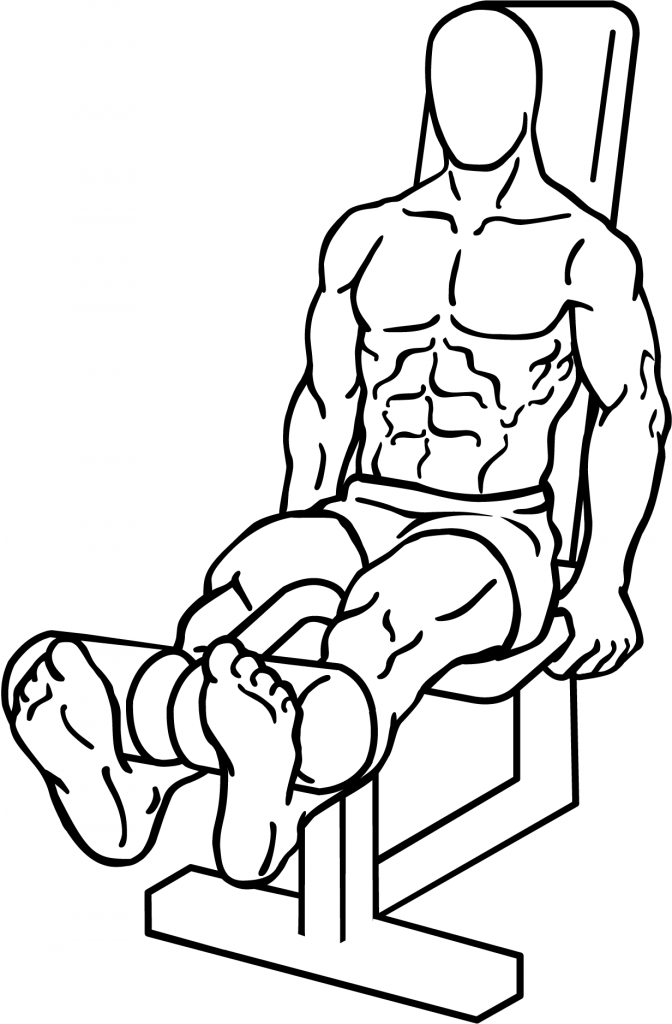
7. **Leg Extensions (and Heavy Squats when risky)**Leg extensions, while isolating the quadriceps, can put significant and potentially harmful stress on the knee joint, especially for men over 40. The mechanics of the exercise, which involves extending the lower leg against resistance while the upper leg is fixed, creates shear forces across the knee. This can lead to increased pressure on the patellar tendon and cartilage, contributing to knee strain and injury over time.
Similarly, heavy squats, particularly when performed with incorrect form or insufficient hip and ankle mobility, can place excessive stress on both the knees and the lower back. If an individual lacks the prerequisite mobility, they might compensate by bending too far forward or rounding their back, which significantly increases the risk of injury to the spine. For men over 40, whose joints may already be vulnerable, these issues become even more pronounced.
The primary concern with both leg extensions and risky heavy squats is their potential to cause knee and back problems, which can severely impact mobility and quality of life. The aim of lower body training is to build strength and power in the quadriceps, hamstrings, and glutes in a way that supports, rather than compromises, joint health. When exercises become a liability, they lose their efficiency for long-term fitness.
For a safer yet highly effective lower body workout, consider leg presses instead of extensions, which target quadriceps effectively with better knee support. The leg press machine allows a controlled range of motion, distributing load more evenly, reducing direct knee shear forces. For squats, when heavy barbell squats are a concern, bodyweight squats are excellent, building strength and mobility without spinal load. Romanian deadlifts can be a hamstring/glute alternative, and the Dumbbell Elevated Split Squat is also a great choice. These alternatives prioritize safety and biomechanics, building strong lower bodies without undue knee and back strain.
As we continue our journey into smarter, more sustainable fitness for men over 40, it’s time to shine a spotlight on some specific barbell exercises that, while staples for younger lifters, often become sources of pain and inefficiency with age. Years of wear and tear, coupled with shifts in mobility and joint resilience, mean that the fixed, heavy nature of barbell training can sometimes do more harm than good. This isn’t about ditching the iron entirely; it’s about re-evaluating which barbell movements truly serve your long-term health and performance goals, and when to swap them for joint-friendlier, equally effective alternatives.
Our bodies change, and so too should our tools and techniques in the gym. The barbell, once a symbol of brute strength, can become an obstacle if not handled judiciously. Many veteran lifters find themselves grappling with shoulder pain, back aches, and compromised joint health simply by stubbornly sticking to barbell variations that no longer suit their anatomy. The good news is that you don’t have to keep grinding through pain to build and maintain strength; there are strategic swaps that allow you to challenge your muscles without compromising your joints, ensuring your workouts remain a source of vitality, not maladies.
This section will delve into seven specific barbell exercises, dissecting their potential problems for men over 40 and, crucially, offering intelligent, joint-friendly substitutes. Our aim is to help you give your joints a much-needed break without sacrificing your hard-earned gains. Remember, training based on ability, not just age, is paramount. If you can perform these barbell exercises without pain and with excellent form, continue by all means. But if discomfort starts to creep in, know that you have effective, safe options to keep your fitness journey strong and active for decades to come.
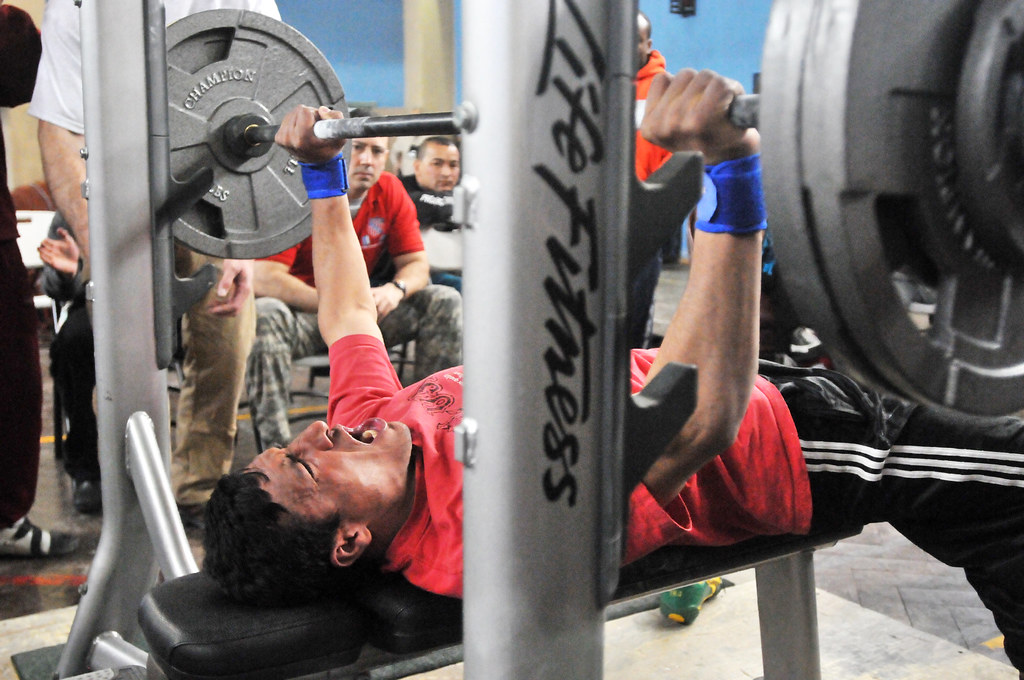
8. **Barbell Bench Press**The barbell bench press is a cornerstone of chest development, yet for many men over 40, it’s also a common culprit for shoulder pain. The primary issue lies in the fixed hand position on the barbell. This constraint often forces the shoulders into an internally rotated position, which can lead to impingement and undue stress on the rotator cuff, especially as tissue tolerance and flexibility naturally decrease with age. This rigid pathway can exacerbate existing shoulder issues or create new ones, making the exercise more detrimental than beneficial.
Many lifters report being able to perform other horizontal pressing exercises, like dumbbell presses or pushups, without issue, precisely because these allow for a more natural and adaptable arm position. The barbell’s unyielding nature means that if your shoulder anatomy isn’t perfectly suited to its path, you’re essentially forcing your joints into a potentially harmful position with every rep. This can lead to chronic discomfort, inflammation, and even significant injury over time, undermining your overall upper body training.
The goal of chest training is to build strength and muscle safely and consistently. If an exercise like the barbell bench press consistently causes shoulder pain, it’s actively hindering your progress by sidelining you with injuries or reducing your training capacity. Continuing to push through this pain is a recipe for long-term joint degradation, making it an inefficient choice for men seeking sustainable fitness after 40.
To effectively train your chest while giving your shoulders a break, the band-resisted pushup is an exceptional alternative. Unlike the fixed path of a barbell, pushups allow for greater freedom in arm positioning, enabling you to find a comfortable, pain-free angle for your shoulders. When combined with a superband or an NT Loop, this exercise provides progressive resistance, effectively challenging your pectoral muscles for development while minimizing the risk of internal rotation and impingement, making it a superior, joint-friendly option.
Read more about: Forge a Powerful Chest: Top 12 Trainer-Approved Exercises for Men Over 40 to Build Size and Strength
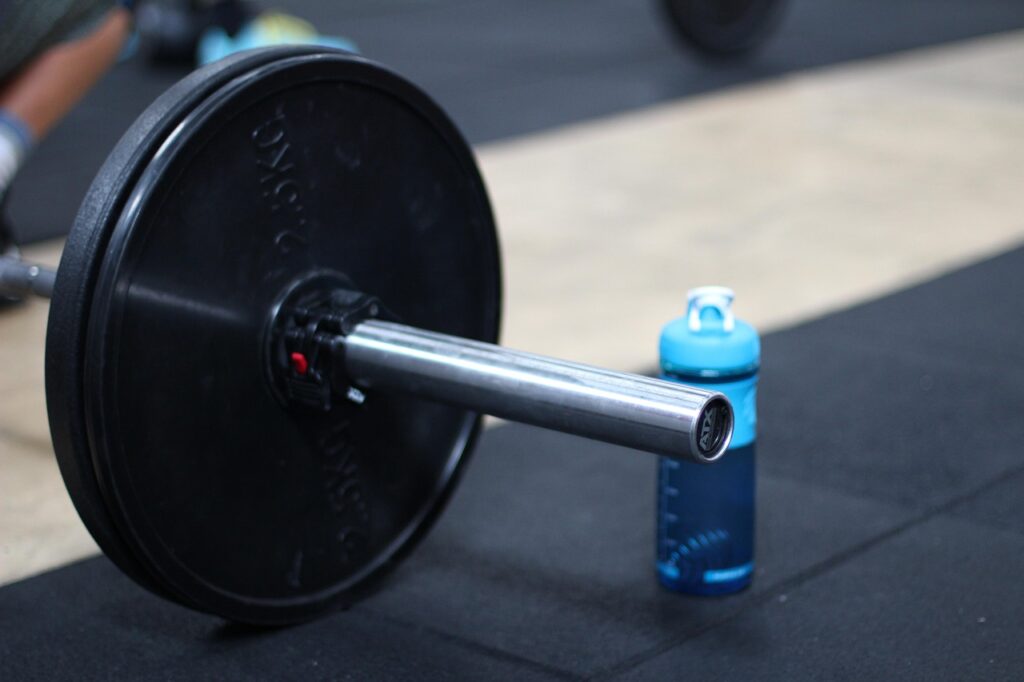
9. **Barbell Shoulder Press**The barbell shoulder press, often a benchmark for upper body strength, presents distinct challenges for men over 40. A common problem is shoulder pain that limits or completely prevents the ability to press a barbell fully overhead. This can stem from years of accumulated wear and tear on the shoulder joints or inherent reductions in overhead mobility. Forcing the movement through a painful range of motion can lead to rotator cuff issues, tendonitis, and exacerbated existing conditions.
Another significant concern is the tendency for men with limited overhead shoulder mobility to compensate by overextending their lower back to get the weight overhead. This creates an unwanted and potentially dangerous stress on the lumbar spine. Such compensatory patterns not only make the exercise less efficient for targeting the shoulders but also drastically increase the risk of lower back injury, transforming a strength-building exercise into a spinal liability.
For men committed to long-term strength and joint health, continuing to perform barbell shoulder presses that cause pain or compromise spinal integrity is counterproductive. The aim is to build powerful, stable shoulders, but not at the expense of other crucial areas like the lower back. The exercise, in this context, becomes inefficient as it introduces unnecessary risks that can lead to interruptions in training or chronic pain.
A far safer and more effective alternative for building shoulder strength without the inherent risks of a full overhead barbell press is the Landmine Angled-Barbell Half-Kneeling Press. This exercise utilizes a landmine anchor, allowing you to press the barbell up and away at an angle, rather than directly overhead. This angled path significantly reduces stress on the shoulder joint, accommodating natural mobility limitations. Furthermore, the halneeling position helps to stabilize the core and prevents overextension of the lower back, ensuring that you target the deltoids effectively and safely, optimizing strength gains for the long haul.
Read more about: Forge a Powerful Chest: Top 12 Trainer-Approved Exercises for Men Over 40 to Build Size and Strength
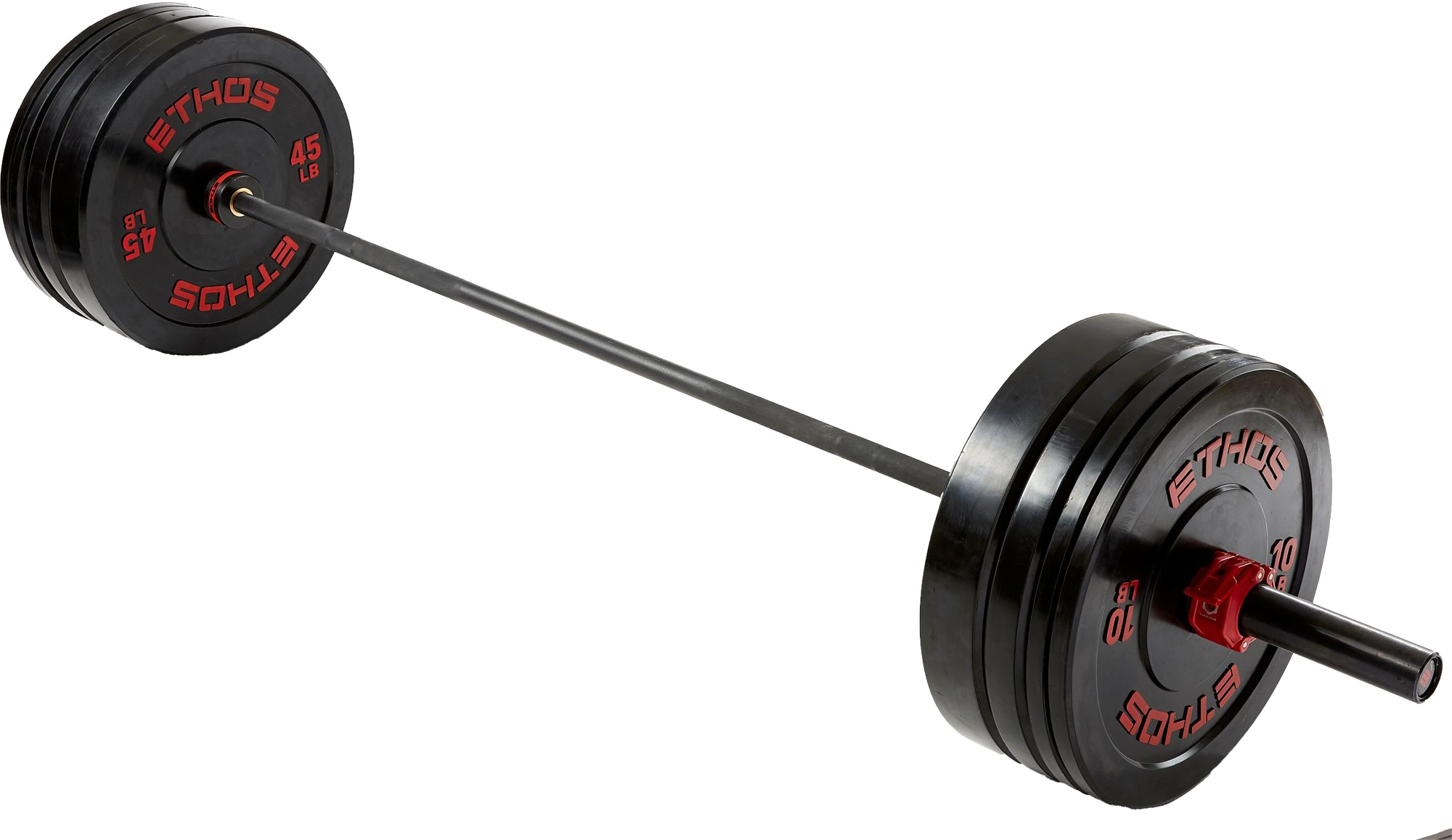
10. **Barbell Back Squats (Shoulder Mobility Challenge)**The barbell back squat, while a powerful exercise for the lower body, often poses significant shoulder mobility challenges for men over 40. The requirement to comfortably hold a heavy loaded bar behind the neck, across the upper back, can force the shoulders into an awkward and externally rotated position. As flexibility and tissue elasticity diminish with age, many individuals find this position highly uncomfortable or even painful, placing undue strain on the rotator cuff and shoulder capsule.
This specific shoulder mobility issue can prevent proper bar placement, leading to compromised form during the squat itself. Lifters might round their upper back or compensate in other ways to maintain their grip on the bar, which then negatively impacts the entire kinetic chain of the movement. The inefficiency here isn’t just about shoulder discomfort; it’s about how this limitation can undermine the safety and effectiveness of the entire squat, reducing its overall benefit for leg and core strength.
Pushing through this shoulder discomfort or adopting poor form just to keep a barbell on your back is a direct route to injury. For men over 40, prioritizing joint health and sustainable movement patterns is crucial. An exercise that requires significant compensation in one area to perform effectively in another becomes a liability, especially when there are equally effective alternatives that do not demand such a high degree of specific joint mobility.
To build robust lower-body strength and stability without the shoulder mobility demands of a barbell back squat, the Dumbbell Elevated Split Squat is an excellent alternative. By holding dumbbells at your sides, you eliminate the need for significant shoulder flexibility to position a heavy bar. Standing on an elevated surface also allows for a greater range of motion, deeply challenging the quadriceps, hamstrings, and glutes. This single-leg dominant exercise also minimizes direct spinal load while promoting improved balance and coordination, making it a safer and highly efficient choice for men over 40 seeking to maintain lower body power.

11. **Barbell Front Squats (Lower Back Stress)**While barbell front squats can offer a solution to the shoulder mobility issues presented by back squats for some, they introduce a different set of challenges, particularly for the lower back of men over 40. With the barbell positioned across the front of the shoulders, the exercise inherently places more direct stress on the spine, especially when performed with significant weight. This is because the torso must remain more upright, and any deviation in form can amplify the compressive forces on the lumbar region.
For individuals with pre-existing back issues or reduced spinal integrity, the front squat can quickly exacerbate pain and discomfort. The increased demand on core stability to maintain an upright posture under load can be taxing, and if the core fatigues, the lower back often takes the brunt of the strain. This makes the front squat, despite its benefits, a high-risk proposition for men over 40 who are looking to maintain long-term spinal health.
Many men in their 40s and beyond experience varying degrees of back sensitivity. Introducing an exercise that, by its very nature, demands such precise spinal alignment and robust core strength under heavy load can be counterproductive. The aim is to strengthen the legs and core synergistically, not to find new ways to stress the most vulnerable parts of the spine. If front squats consistently leave your lower back feeling tight, achy, or compromised, they are an inefficient choice for sustainable fitness.
Similar to back squats, the Dumbbell Elevated Split Squat provides a fantastic alternative to barbell front squats, effectively building lower body strength while significantly reducing spinal load. By holding dumbbells, the weight is distributed more naturally at your sides, eliminating the direct compressive force on the front of the spine. The split-stance position allows for a more upright torso, which is inherently easier on the back, even for those with less mobile hips and ankles. This exercise challenges the quads, hamstrings, and glutes deeply, promoting robust leg development with far less risk to the lumbar spine.

12. **Barbell Conventional Deadlifts (Back Pain Risk)**The conventional barbell deadlift, often hailed as the king of exercises, is undeniably effective for building overall strength, particularly in the back and legs. However, for men over 40, this movement carries a significant risk of back injury, especially if form isn’t perfect or if there are existing sensitivities. The mechanics of lifting a heavy bar from the floor can place immense shear and compressive forces on the spinal discs and ligaments, making it a prime candidate for lower back pain and even more severe injuries.
Many individuals, even those without pre-existing back pain, report feeling very tight and achy in their lower back after performing conventional barbell deadlifts, especially towards the end of a set when fatigue sets in and form might waver. This inherent risk is amplified as we age due to potential reductions in spinal disc resilience and accumulated wear and tear. The exercise’s efficiency is severely undermined if it consistently leads to painful setbacks or disrupts other aspects of your training.
The goal of deadlifting should be to build strength in the posterior chain—glutes, hamstrings, and lower back—in a way that enhances functional movement and protects spinal health. If the conventional barbell deadlift consistently causes or threatens back injury, it becomes a counterproductive choice. Sustained back pain can severely limit daily activities and compromise your ability to perform other beneficial exercises, making it an inefficient use of your body’s resources.
For building strength in the posterior chain with significantly reduced risk of back injury, Romanian deadlifts (RDLs) are an excellent alternative. Unlike conventional deadlifts, RDLs start from a standing position and focus on the hip hinge movement, keeping the barbell closer to the body and minimizing the range of motion where the lower back is most vulnerable. This emphasizes the hamstrings and glutes while placing less direct strain on the lumbar spine. Performed with proper form, RDLs allow for effective strength development, contributing to a resilient and injury-resistant lower back for men over 40.

13. **Barbell Deadlifts (Flare-Up Back Pain & Fixed Bar Position)**Beyond the general risk of back injury with conventional deadlifts, the specific mechanics of lifting a standard barbell from the floor can particularly flare up existing back pain for some men over 40. The fixed position of the barbell requires the lifter to navigate around it, often forcing the body into less optimal biomechanical positions, especially at the start of the lift. This can increase the likelihood of undue stress on the lumbar spine, even with diligent attention to form, making the exercise inefficient for those with back sensitivities.
Furthermore, the problem section notes that deadlifts can cause some guys who don’t otherwise have back pain to feel very tight and achy in their lower back, particularly when form isn’t perfect. This suggests that the inherent design of the barbell, requiring a specific setup that might not align with every individual’s anatomy or current mobility limitations, is a significant factor. For men over 40, who might have less flexibility or a history of minor discomfort, this makes the standard barbell deadlift a high-risk, low-reward movement.
The objective of including deadlifts in a routine for men over 40 is to enhance overall strength and functionality without compromising the integrity of the spinal column. If the exercise consistently leads to chronic discomfort or aggravates existing back issues, it’s not serving its purpose. The inefficiency stems from the potential for the exercise to detract from, rather than contribute to, an active and pain-free lifestyle, leading to unnecessary downtime and hindering consistent training.
The Trap Bar Deadlift stands out as a superior, joint-friendly alternative for men over 40 looking to build deadlift strength while mitigating back pain. The trap bar’s design allows you to stand inside the weight, bringing the load closer to your body’s center of gravity. This reduces the leverage on the lower back and promotes a more upright torso position, which is significantly easier on the spine. With the weight at your sides, it’s a more natural and less impingement-prone position to lift from the floor, allowing you to achieve similar muscle and strength gains without compromising your back health.
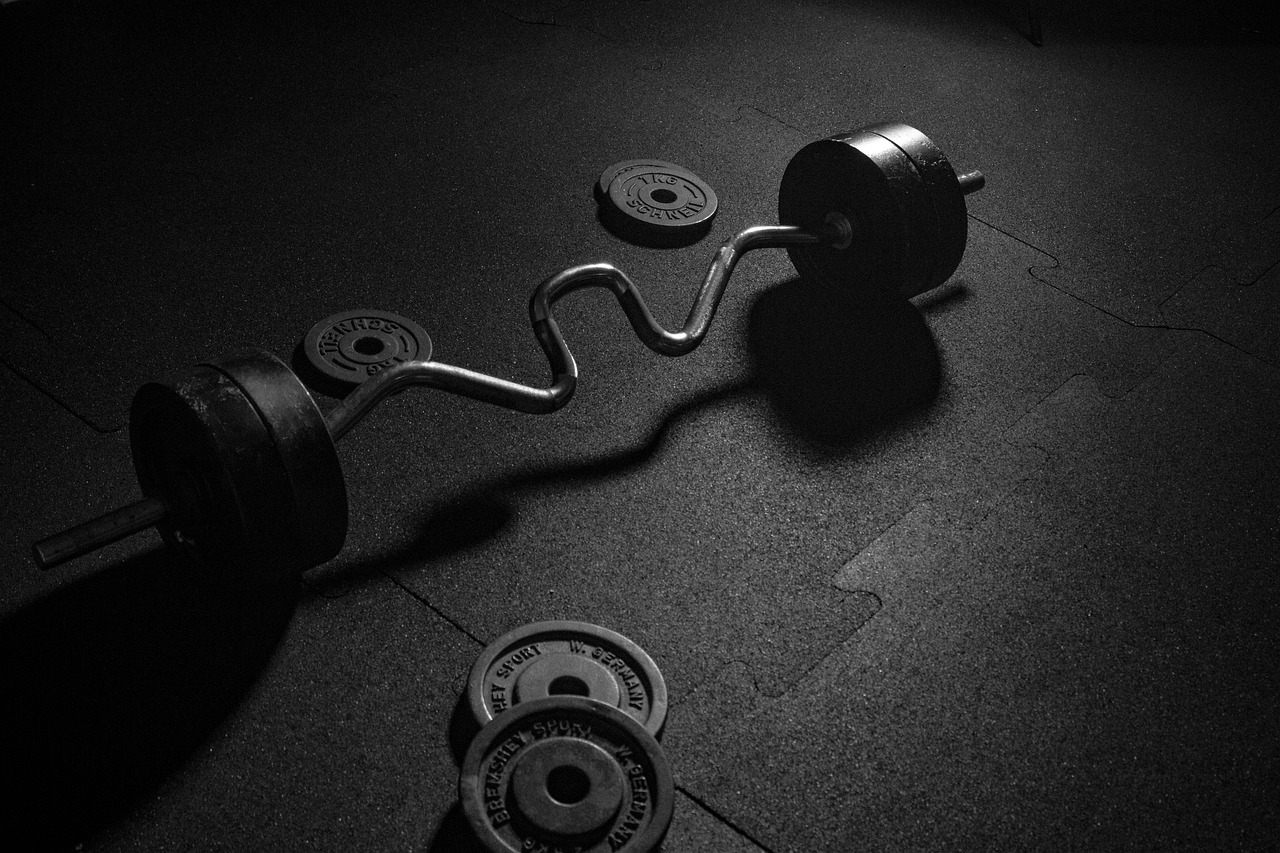
14. **Barbell Bent-Over Rows**The barbell bent-over row is an effective exercise for strengthening the back and biceps, but its bent-over position can be problematic, causing significant back pain for men over 40. Maintaining a strict, hinged position at the hips with a neutral spine for the duration of the set places the lower back under constant, significant isometric load. As fatigue sets in, especially towards the latter end of each set, the ability to maintain this ideal posture diminishes, increasing the risk of spinal strain and injury.
Compounding this issue is the fixed hand position on the barbell, which, similar to the bench press, might not align optimally with every individual’s shoulder and arm anatomy. This can force the shoulders into less natural positions, potentially leading to discomfort or exacerbating existing issues in the upper back or shoulders, in addition to the primary strain on the lower back. For men over 40, who may have reduced spinal resilience or shoulder flexibility, these factors make the barbell bent-over row a high-risk exercise.
The purpose of back training is to build strength, improve posture, and enhance overall upper body pulling power. If an exercise, despite its benefits, consistently leaves your lower back aching or compromises your ability to perform other movements, it becomes inefficient. Sustained lower back discomfort from bent-over rows can sideline you from your training routine, affecting consistency and negating any perceived strength gains by introducing preventable pain.
To effectively target the back muscles while drastically reducing the demand on the lower back, the Bench-Supported Dumbbell Single-Arm Row is an excellent, joint-friendly alternative. By supporting your non-working hand on a bench, you offload a significant portion of the isometric strain on the lower back, allowing you to focus purely on pulling the weight with your lats and rhomboids. This unilateral approach also permits a more natural range of motion for the working arm, minimizing shoulder strain and fixed-barbell constraints, making it a safer and highly efficient method for building a strong, resilient back after 40.
Read more about: Mastering Midlife Fitness: The Essential Exercises Men Over 50 Need to Stay Strong, Mobile, and Injury-Free
Embracing these strategic adjustments in your workout routine isn’t about giving up on heavy lifting; it’s about evolving your approach to align with your body’s natural changes. The journey of fitness past 40 is less about chasing fleeting trends and more about mastering sustainable practices that support a lifetime of strength, mobility, and vitality. By rethinking traditional barbell exercises and integrating joint-friendly alternatives, you’re not just preventing injuries—you’re investing in a future where you remain active, strong, and capable, ready to tackle any challenge life throws your way. It’s about training smarter, living better, and ensuring that your body remains your greatest asset for years to come.



